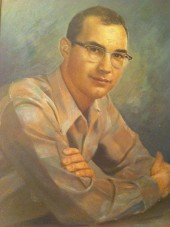 November 11, 2012.
November 11, 2012.
What seems to not have been understood is that, except for a few nuts who would find something wrong today even with the good newspapers and magazines in the movement/community, from the first issue, ONE Magazine was professional, something even closeted men and women could be proud of.
They didn’t have anything else. Early Mattachine had been secret except for the front group formed to support Dale Jennings’ court case which he, in a sense, won due to a hung jury—probably the first time someone had said they were homosexual but did not publicly solicit sex with this man. (He covered this in the first issues and was the first editor as well as a co-founder of Mattachine and ONE. Later he was famous for writing The Cowboys, the movie John Wayne was in.)
The editors asked famous homosexual authors to contribute but none would except Norman Mailer. So no author/writer/media person could later say they did not know there was, at last, a homosexual publication, telling people what was being said and done about homosexuality. And with no apology.
Jim Kepner had a hard job searching for news, since few places—except for printing names of those arrested—would mention or use the word “homosexual.” As I have pointed out, a search of the Readers Guide to Periodical Index over the decades will show just how little news, articles, etc., there was in the 1950s and 1960s. Slowly but surely the coverage grew, until today, you would need a whole book to list all the articles.
The most-read parts of ONE and later Tangents were the Tangents news section and the letters to the editor. The letters were real. It is still interesting to see/hear people from all over the nation were writing to ONE in those years, saying what they write to Ellen and celebrities today—saying, to new people each year, “You are an inspiration. I did not know anyone else was like me. You give me courage, etc.”
I wonder why editors today do not think readers would like to see the letters they get?
The movement / community has to know that there was a doubt that you could publish such a magazine promoting acceptance of homosexuality—and obviously they were right since ONE had to go to court to protect that right. That court case (when the Post Office stopped an issue, at the urging of a politician) is covered well in the book Courting Justice.
Some young writers and media types were able to test the waters by writing for ONE. Joseph Hansen is an example. Some fiction was good. The different views on homosexuality were educational. There was no other place this discussion was taking place. We did not censor. We let the readers hear the opinion and decide for themselves. I do not think there is an idea or view heard today that was not covered in ONE—such as the early discussion about marriage.

